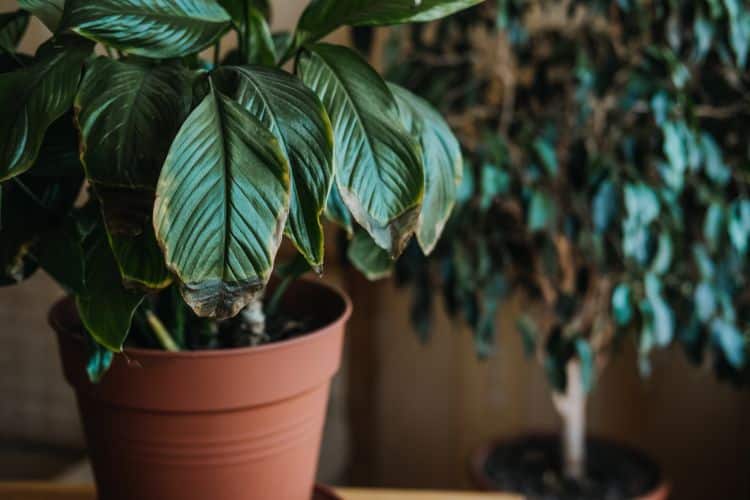In our constant pursuit of creating healthier living spaces, we often overlook nature’s own solutions, specifically the use of houseplants. Not just a decorative element, these green companions of ours significantly contribute to improving indoor air quality. This article delves into the fascinating role of houseplants as natural air purifiers and mold combatants, as well as offers some practical care tips to efficiently utilize their potential. If you strive to create a healthier environment in your home, you’ll find this read illuminating and fruitful.
The Science Behind Plants and Mold
Plants and mold have a unique relationship that is rooted in science. Although mold is often viewed as a pest that can cause damage to homes and negatively impact health, it plays an important role in our ecosystem by breaking down organic matter. This is where plants come in as they absorb light and carbon dioxide during photosynthesis, essentially “cleaning” the air. However, certain types of mold can still thrive in indoor environments, which is where houseplants come into play. The science behind this relationship lies in the fact that some plants have the ability to combat mold growth by releasing natural compounds that can suppress it. Understanding the science behind plants and mold is crucial for creating a healthy and thriving indoor environment.

The Problem with Mold in Homes
Mold is a common problem found in many homes, and it can be a nuisance to deal with. Not only does it cause unsightly stains on walls and floors, but it can also lead to serious health conditions if left unchecked. Mold growth is often caused by excess moisture and poor ventilation, which is why it’s crucial for homeowners to address these issues head-on. Thankfully, there are many houseplants that can help combat mold growth by improving indoor air quality and absorbing excess moisture. By incorporating these plants into our homes, we can not only improve the aesthetic of our living spaces but also promote a healthier living environment.
| The Problem with Mold in Homes | Description |
|---|---|
| Health Risks | Mold exposure can lead to a variety of health issues such as respiratory problems, allergic reactions, and in severe cases, neurological damage or immune system suppression. Therefore, it’s crucial to consider mold removal as soon as possible. |
| Property Damage | Mold can slowly destroy the surfaces it grows on. Walls, ceilings, floorings, and furniture are all susceptible to damage. Mold inspection is a preventive measure that can help identify and address the problem before it gets out of hand. |
| Decreased Property Value | Extensive mold growth may negatively impact a home’s value. Potential buyers may back out of buying a home if a mold inspection reveals a significant mold problem. |
| High Removal Costs | Mold removal can be a tedious process that might require professional assistance. Although this task doesn’t involve specific prices, it’s worth noting that the cost can be substantial, especially if the mold has spread extensively. |
| Difficulty in Removal | Fully eradicating mold from your home can be a challenging task. Some species of mold can produce resilient spores that can survive under harsh conditions, necessitating thorough and repeated mold removal efforts. |
Houseplants that Combat Mold Growth
While mold growth can be a nuisance in any household, some houseplants have been shown to combat mold in a natural and effective way. The Relationship Between Plants and Mold has been extensively researched over the years, and certain plant species have proven to be particularly effective at purifying the air and reducing moisture levels. In fact, some studies have shown that certain plants such as Boston Ferns, English Ivy, and Spider Plants can decrease the amount of mold spores in the air and lower the chance of mold growth. Not only do these plants help fight against mold, but they also add aesthetic value to any living space, making them a great natural solution for a cleaner, healthier home.
Caring for Your Anti-Mold Houseplants
The benefits of houseplants as natural air purifiers are well-known, especially for their ability to combat mold growth in your home. Proper care of your anti-mold houseplants is essential to ensure that they do their job effectively. One way to keep them healthy is to place them in well-lit areas with moderate temperature and humidity levels. Overwatering is the most common mistake made when caring for indoor plants, but it can be avoided by allowing the soil to dry out slightly between watering sessions. Additionally, providing them with a regular supply of fertilizers and periodically removing dead leaves and debris will help to promote the longevity and effectiveness of your anti-mold houseplants. By taking the time to care for your plants, you can reap the many benefits that come with incorporating them into your home.
Conclusion
In conclusion, the use of houseplants as natural air purifiers and mold combatants proves that nature provides a plethora of solutions to our everyday problems. By simply incorporating houseplants such as Boston Ferns, English Ivy, or Spider Plants into your indoor environment, you can significantly decrease the risk of mold growth and create a healthier living space. Remember, these plants require proper care and attention to effectively do their job; therefore, mindful watering, providing ample light, and timely use of fertilizers are essential. As we continue to navigate our way towards healthier lifestyles, let’s not forget to consider the natural options at our disposal, which not only solve our issues but also add aesthetic value to our surroundings.




